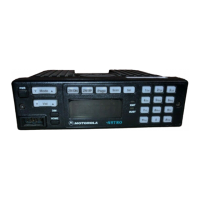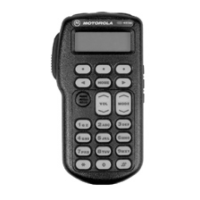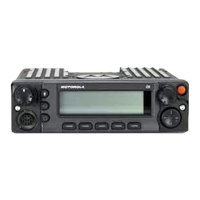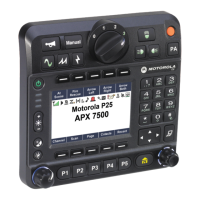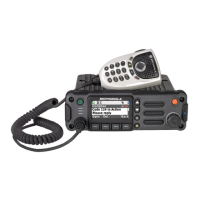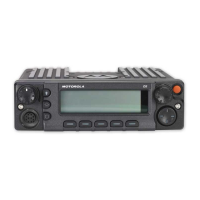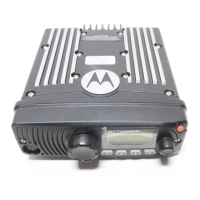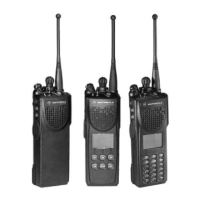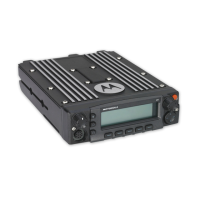6881076C25-E September 5, 2008
Theory of Operation: Voltage Control Oscillator 3-47
3.5 Voltage Control Oscillator
This section of the theory of operation provides a detailed circuit description of voltage control
oscillator (VCO). When reading the Theory of Operation, refer to your appropriate schematic and
component location diagrams located in “Chapter 7. Schematics, Component Location Diagrams
and Parts Lists”. This detailed Theory of Operation will help isolate the problem to a particular
component. However, first use the ASTRO Digital Spectra and Digital Spectra Plus Mobile Radios
Basic Service Manual to troubleshoot the problem to a particular board.
3.5.1 VHF Band
3.5.1.1 General
The frequency injection string consists of a voltage-controlled oscillator (VCO) constructed on a
ceramic substrate and amplifier and divider stages located on the PC board. The components
associated with the PC board may be repaired by conventional methods while the VCO substrate
should be replaced as a unit.
3.5.1.2 DC Voltage Supplies
The 9.6-V supply enters the VCO carrier board at P601-2. It powers the receiver amplifier (Q675)
and its associated biasing components. The keyed 9.4-V supply enters the carrier board at J601-5,
but only during the transmit mode. K9.4 powers the divider (Q681), and the buffer amplifiers (Q682,
Q683). The 8.6-V supply enters through P601-12 and passes to MP652, MP653, and MP654 on the
VCO substrate. The 8.6 V supplies the output buffer on the VCO substrate, and supplies Q642 and
0643, the PIN diode drivers.
3.5.1.3 VCO
The VCO utilizes a common-gate FET in a Colpitts configuration as the gain device. The LC tank
circuit's capacitive portion consists of a varactor bank and a laser-trimmed stub capacitor. The
inductive portion consists of microstrip transmission-line resonators. The stub capacitor serves to
tune out build variations. Tuning is performed at the factory and is not field adjustable. The varactor
network changes the oscillator frequency when the DC voltage of the steering line changes. The
microstrip transmission lines are shifted in and out of the tank by PIN diodes for coarse frequency
jumps. The varactor bank consists of CR644 CR645 and L648. The positive steering line connects to
the cathodes of both varactors through L3647, an RF choke. This line is normally between 0.5 and
8.5 Vdc, depending on the frequency programmed in the synthesizer. The negative steering line
connects to the anodes of the varactors through L646 and is normally 3.9 (±0.3) Vdc.
Diode CR643, a third varactor tapped into the main transmission line resonator, modulates the
oscillator during transmit. The 8.6 Vdc supplies bias to the cathode. Modulation is coupled to the
anode through C639, R636, C636, and R3637, which also provide filtering and attenuation to the
modulation path.
Components CR646, C668, and R655 provide automatic gain control for the FET. A hot carrier
diode, CR3646, detects the peak RF voltage swings on the source of the FET. A negative voltage,
proportional to the magnitude of the RF voltage swing, is applied to the gate of the FET, thereby
lowering its gain and accomplishing automatic gain control. Typical DC value of the gate bias is
-0.8 to -1.7 V, depending on the state of the oscillator.
PIN diodes, CR640, CR641, and CR642, serve to couple secondary transmission lines into and out
of the main oscillator tank, depending on which range the VCO is operating. AUX 1* controls CR642
and CR643; AUX 2* controls CR3640. When AUX 1* goes high, Q643 turns off and a reverse-bias
voltage of about 8.6 Vdc is applied to the PIN diodes to turn them off. When AUX1* goes low, Q643
turns on and a forward-bias current of about 15mA is supplied to the PIN diodes to turn them on. The
other PIN diode driver network operates similarly.
